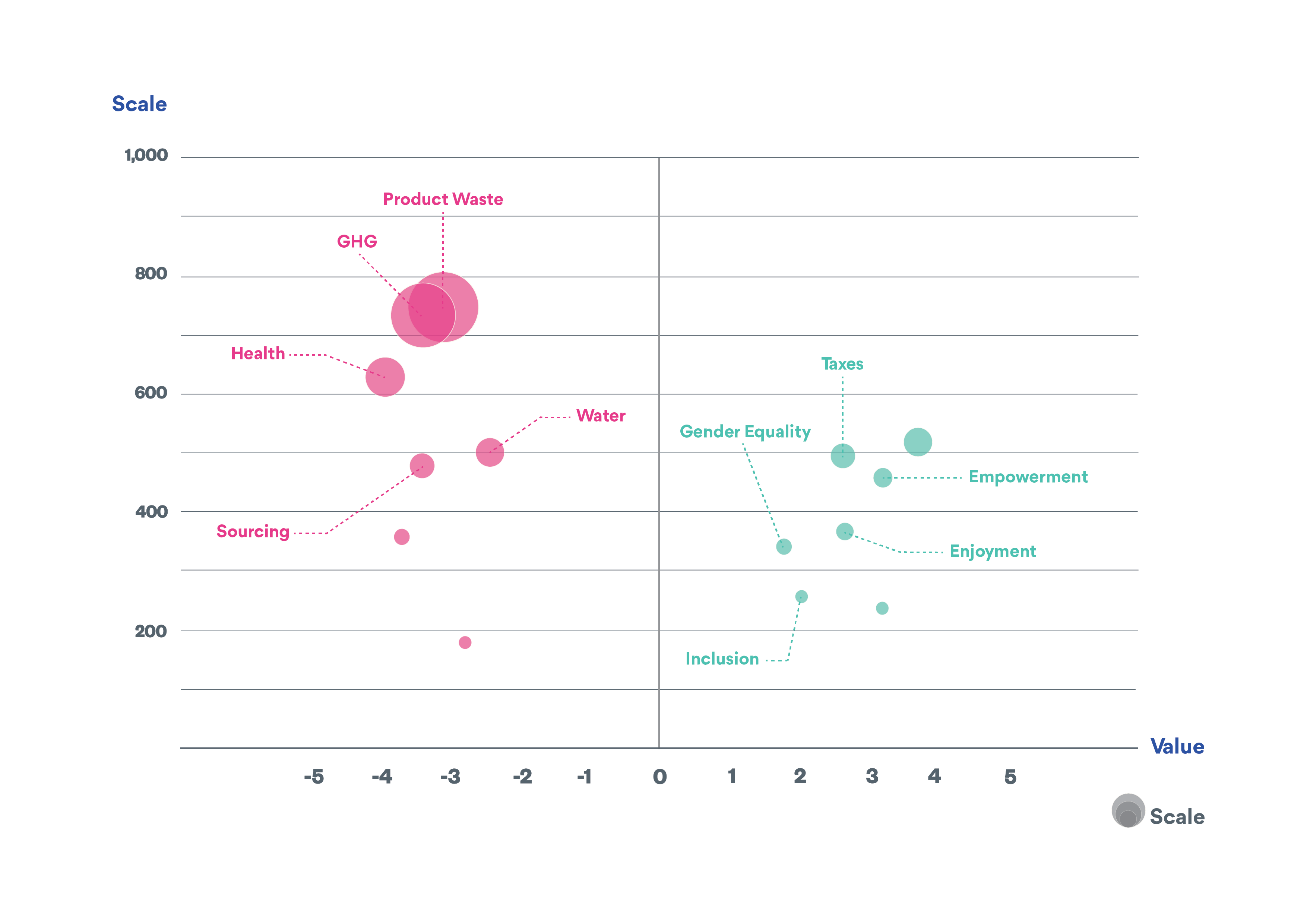With sustainability issues becoming part of global dialogues, business reporting has transitioned to recognize the dual significance of these concerns. This brings us to the concept of double materiality – an approach that harmonizes the intricate interface between sustainability concerns and their tangible repercussions on businesses.

Unveiling Double Materiality: Transforming Impact Data into Actionable Business Insights
The Impaakt Team
8 min Read Time | November 6th 2023
What is Double Materiality?
Double materiality is a concept in financial and non-financial reporting that acknowledges two dimensions of material issues. The first pertains to the traditional understanding of financial materiality: how environmental and social issues can influence a company’s financial performance, its operations, and its long-term prospects. The second dimension takes a more external lens, examining impact materiality, or how a company's activities and strategies affect the broader societal and environmental landscape.
Together, they form the basis of Double Materiality.
The Imperative for Double Materiality
For years, the limelight has been on ESG metrics. While this marked a notable move towards corporate accountability, a disconnect still exists between reducing the negative impact on society and the environment and a company's business strategies, or better still focusing on creating products and services that have a positive impact.
Double materiality has the potential to close this gap by underscoring not just the challenges but also the opportunities embedded in sustainability. It acknowledges that sustainability isn’t merely a defensive strategy but also a launchpad for innovation, market differentiation, and enriched stakeholder engagement.
Our approach to defining materiality
Instead of relying solely on traditional metrics or self-reported data, Impaakt harnesses the power of collective intelligence. By tapping into a diverse community, Impaakt ensures a more holistic and unbiased assessment of a company's impact.
Impaakt’s community of 50,000 trained members collaborates to document, analyze, and evaluate the impact of various companies. Through this collective effort, we have amassed a database of around 1 million materiality assessments, aggregated into comprehensive company scores and detailed topic scores. This methodology stands in contrast to traditional, one-sided evaluations, providing a multifaceted perspective derived from the voices of our global society.
Further, one of the standout features of this approach is its focus on industry-specific topics that provide a clear picture of each company’s activities. Recognizing that material issues vary across sectors, Impaakt empowers its community to select the most pertinent social and environmental topics for each industry. This approach ensures that assessments are not only relevant but also reflect the real-world concerns and priorities of a diverse group of individuals. For instance, while water conservation might be a critical topic for the beverage industry, data privacy could be more material for tech companies. By allowing the community to weigh in on these topics, Impaakt ensures that the most significant impacts—whether they stem from a company's operations, products, services, or philanthropic efforts—are brought to the forefront.
Using a concrete case study, Coca-Cola’s materiality map highlights how distinct patterns emerge, notably in the form of three prominent bubbles that tower above the rest.

These bubbles signify the most pressing concerns identified by our community, and it comes as no surprise that plastic pollution, greenhouse gas (GHG) emissions, and adverse health impacts are the most material topics concerning Coca Cola.
Plastic pollution, particularly in the form of product waste, presents a significant challenge. Recent data indicates that Coca Cola generated a staggering 5.95 million tonnes of waste, predominantly comprised of packaging. Evidently, Coca Cola stands as one of the major contributors to plastic pollution, consistently ranking among the top offenders for five consecutive years.
Greenhouse gas emissions further exacerbate the environmental impact. Coca Cola's carbon footprint is significant, emitting 64 million metric tons of CO2e. To put this into perspective, this emission volume equates to the exhaust of 13 million cars driven for an entire year.
Finally, Coca Cola’s contribution to health issues is concerning. A substantial 62% of their sales are derived from sugary soft drinks, a significant factor exacerbating global health problems.
By understanding these material concerns, we gain valuable insights into the true impact of Coca Cola on our planet and society. This nuanced assessment, made possible by our diverse and informed community, provides a comprehensive understanding of the company's global footprint.
Through this approach, we empower not only our community but also society at large to make informed decisions, advocating for change and encouraging companies to adopt more sustainable and responsible practices.
Spread the word about Impaakt

Let’s take action together
With the right investment companies having a positive impact on the planet are able to flourish. Our community forms part of that mission by measuring their impact.
